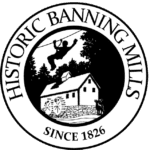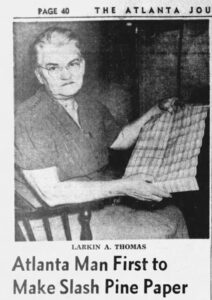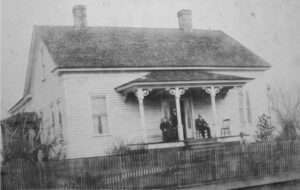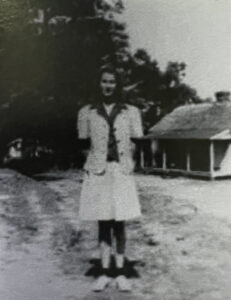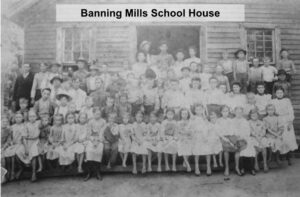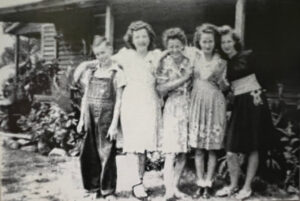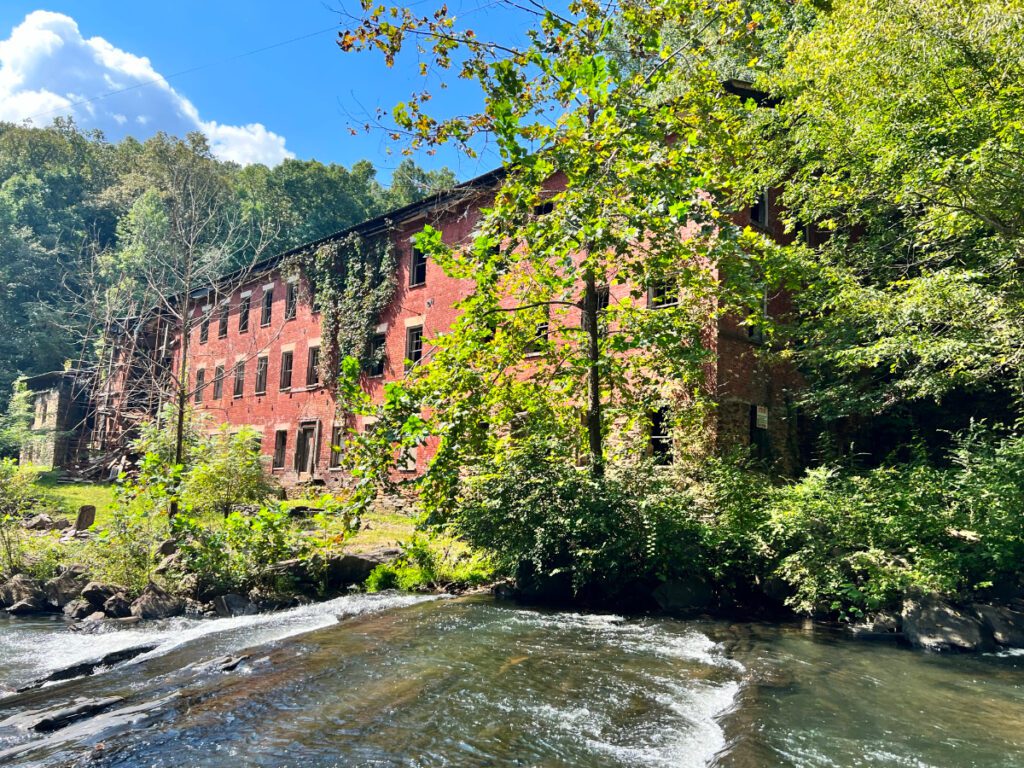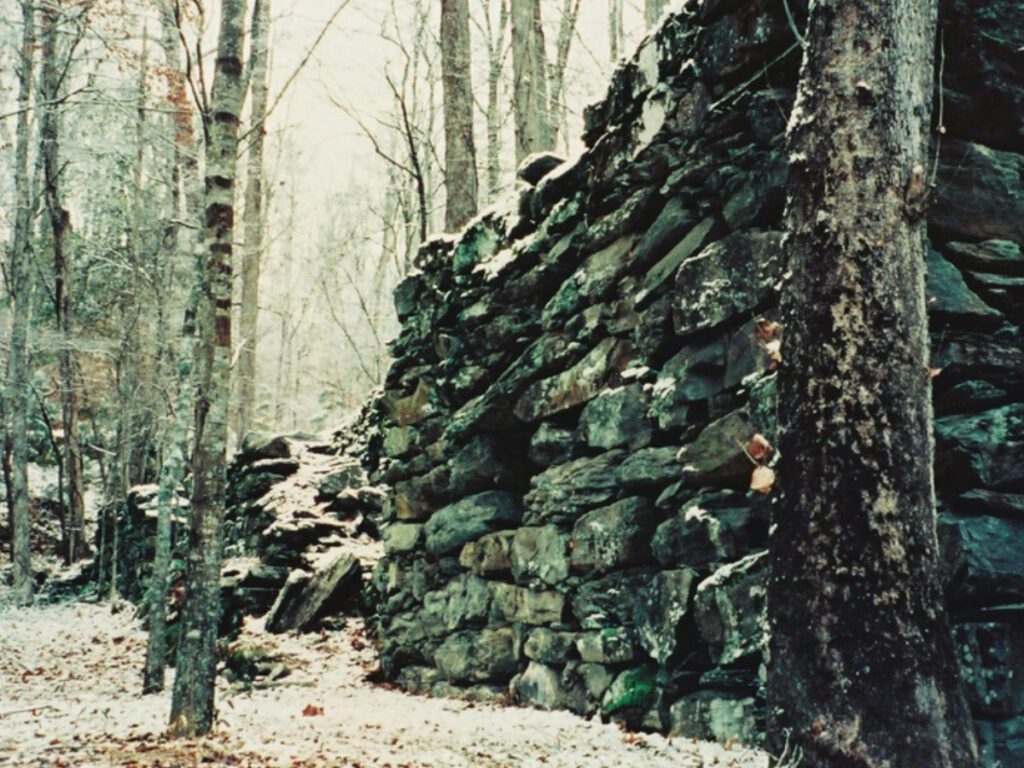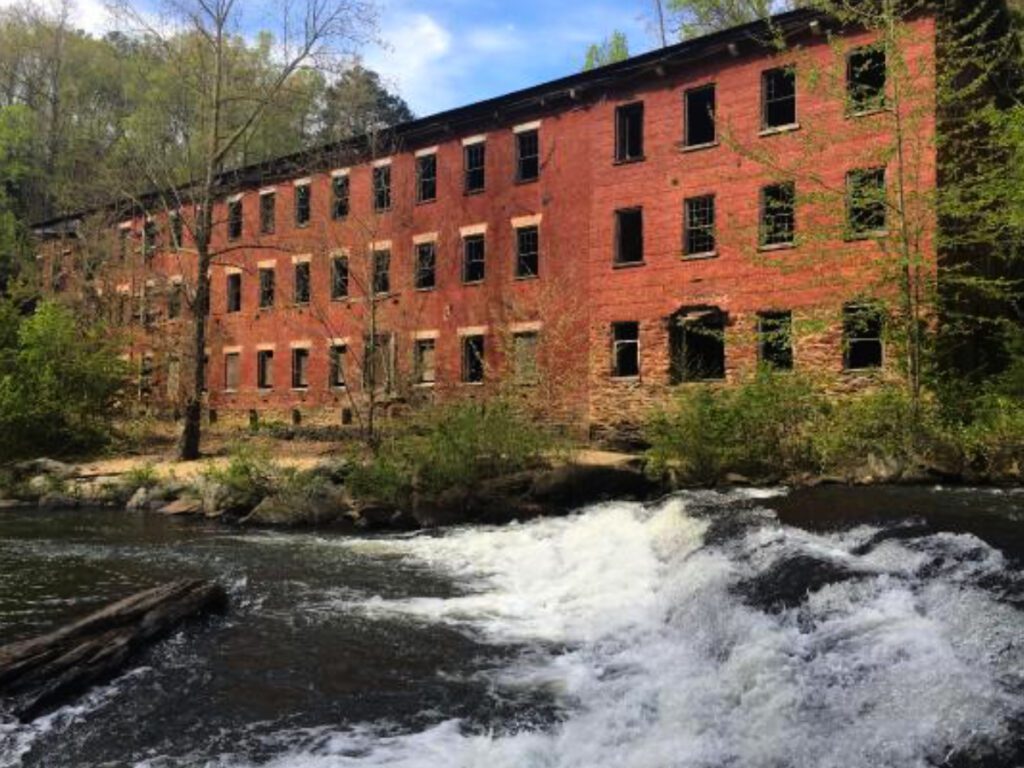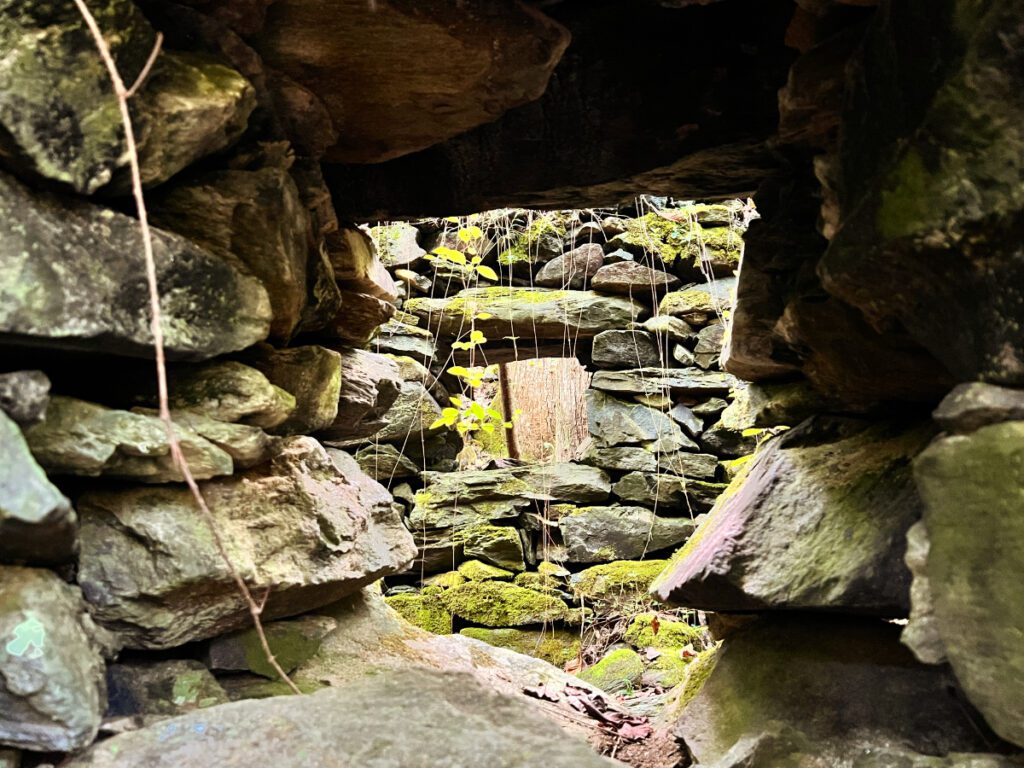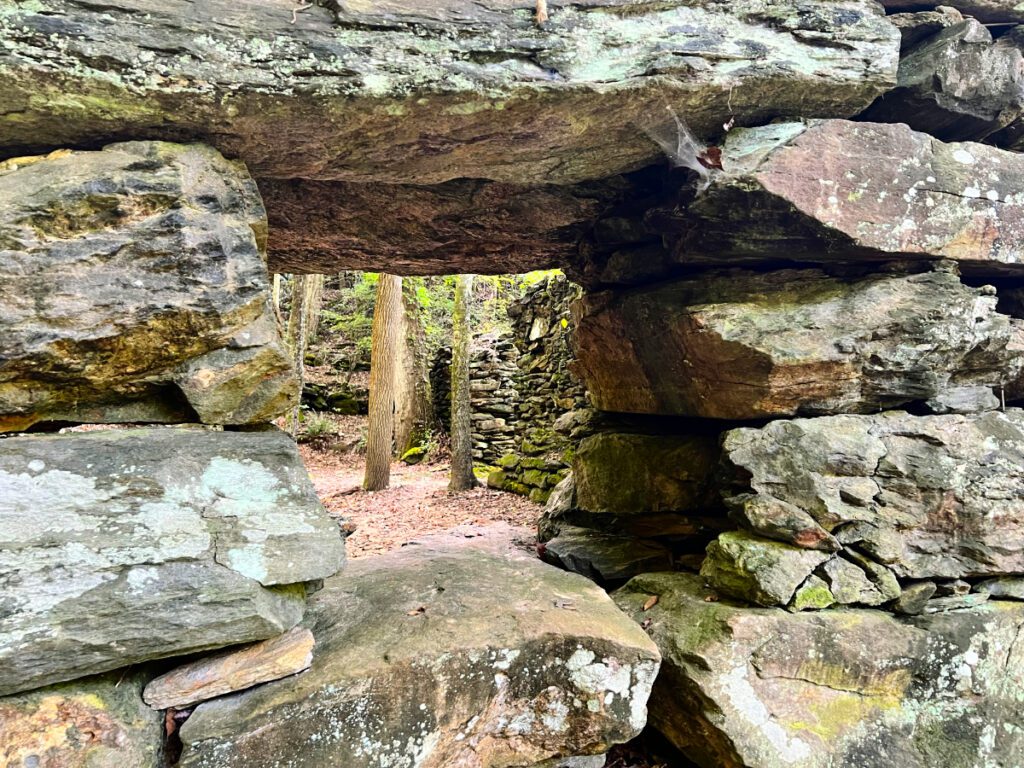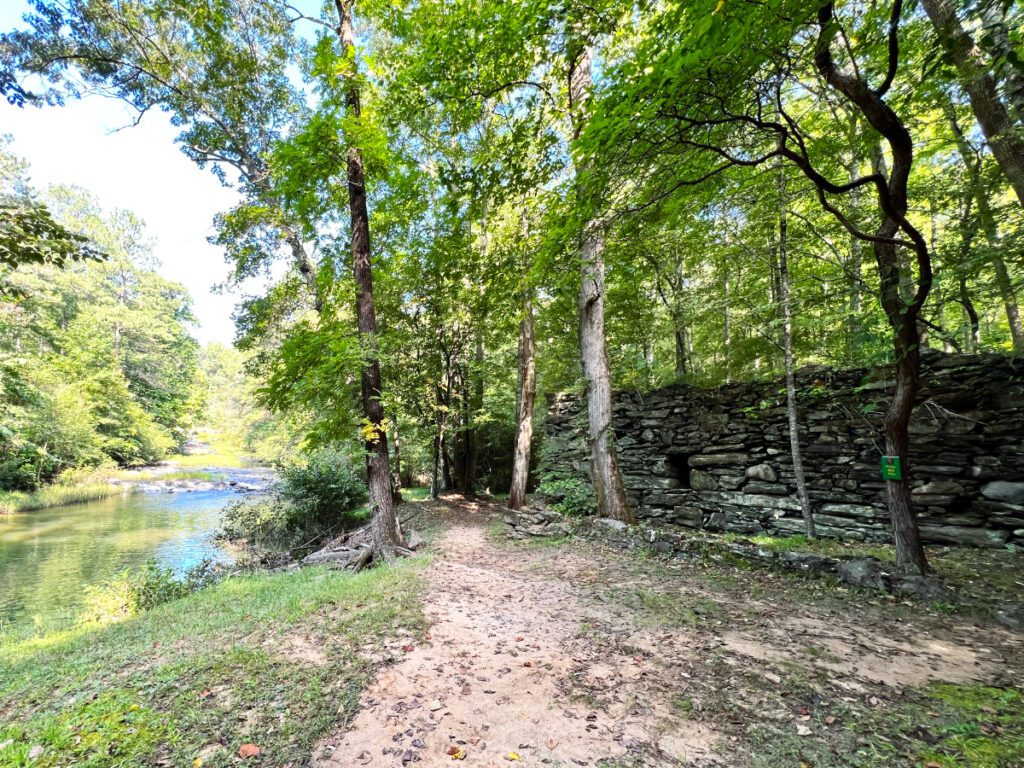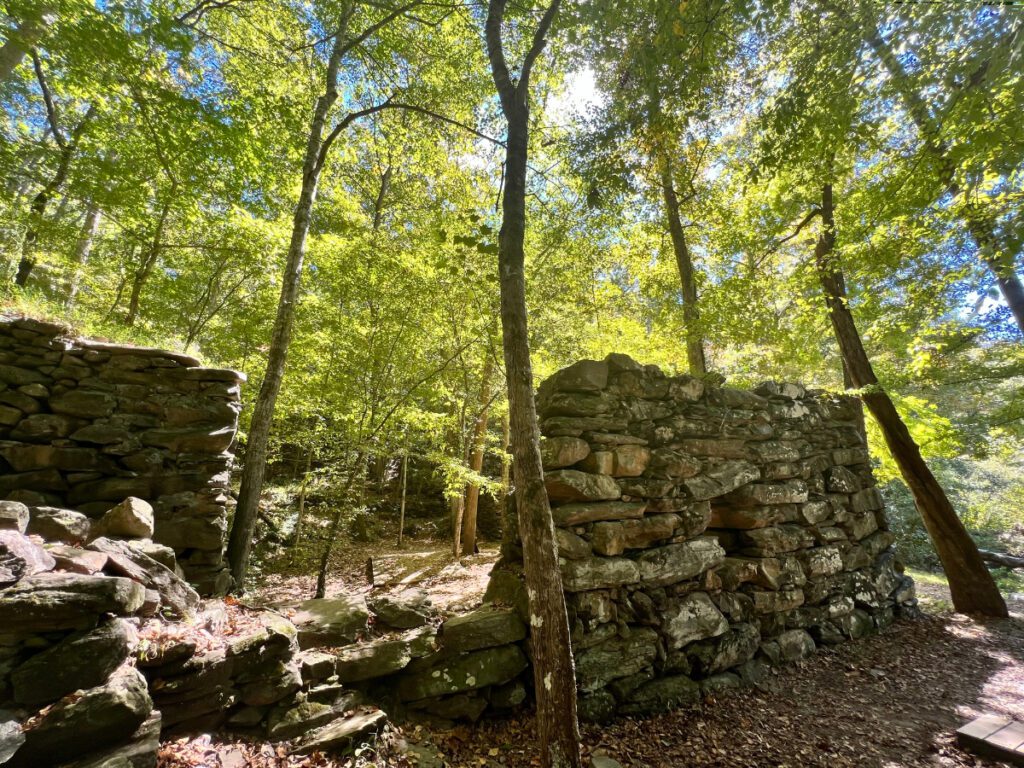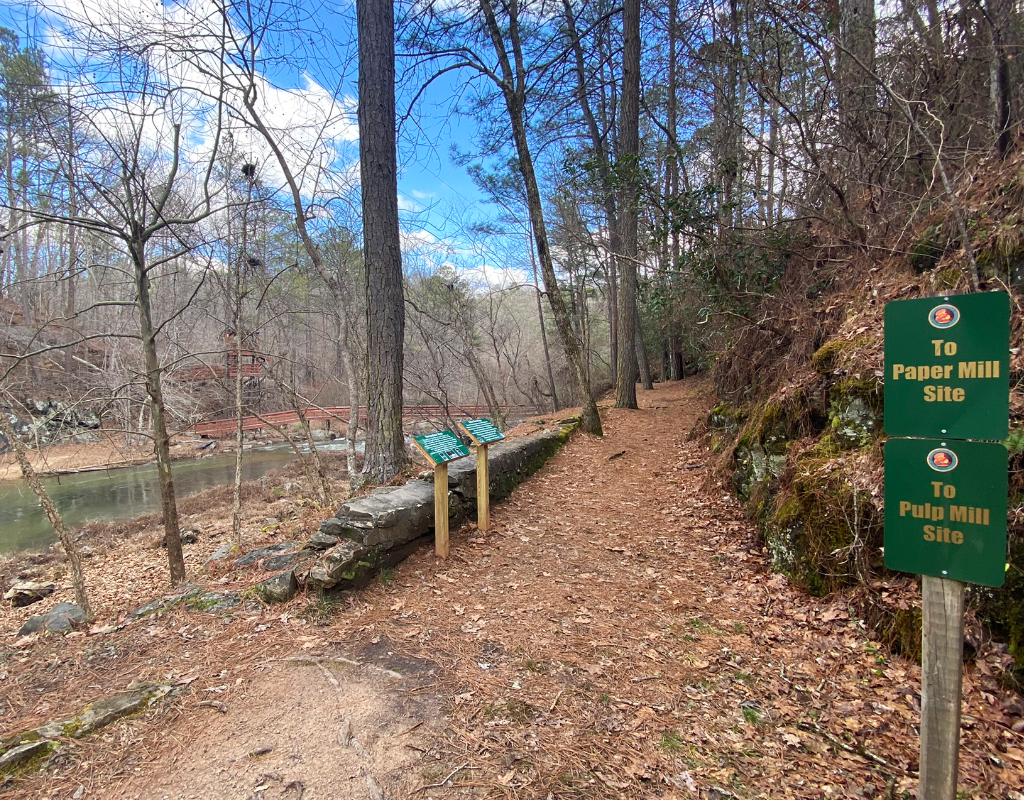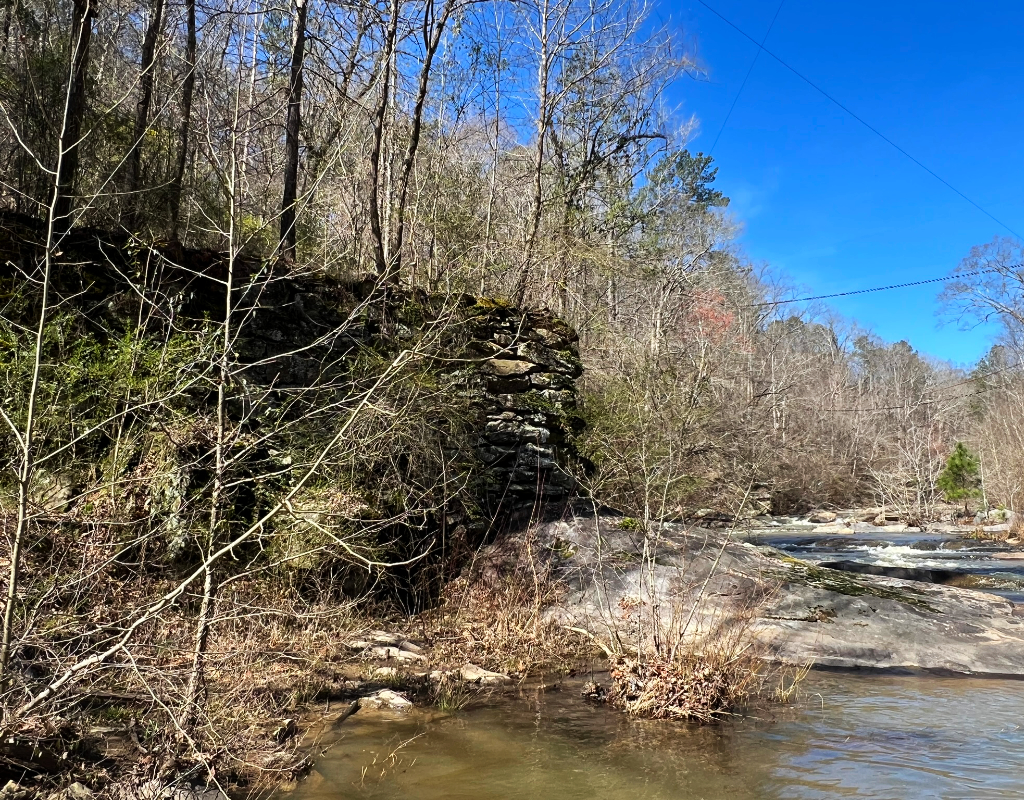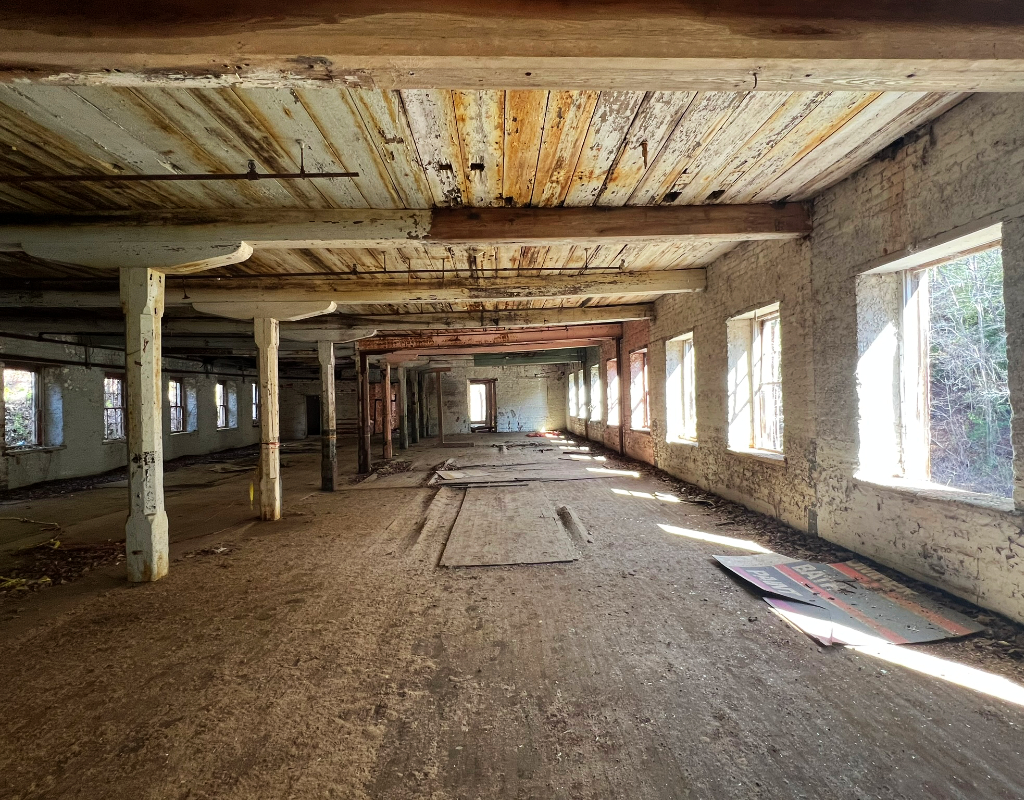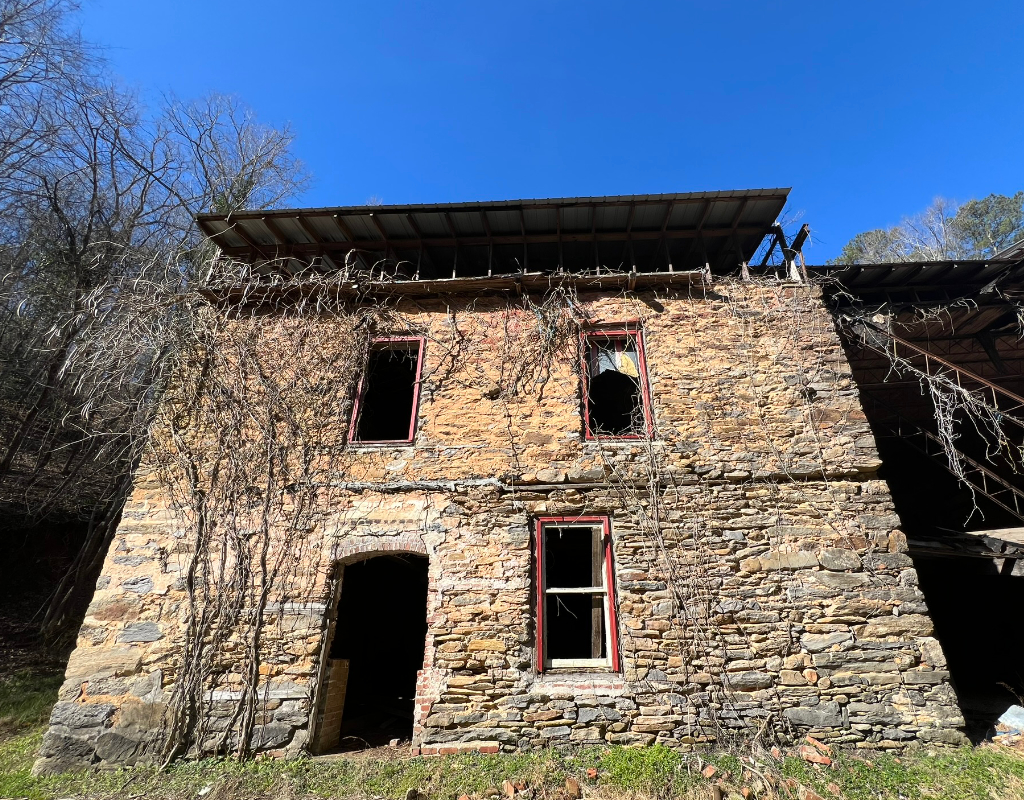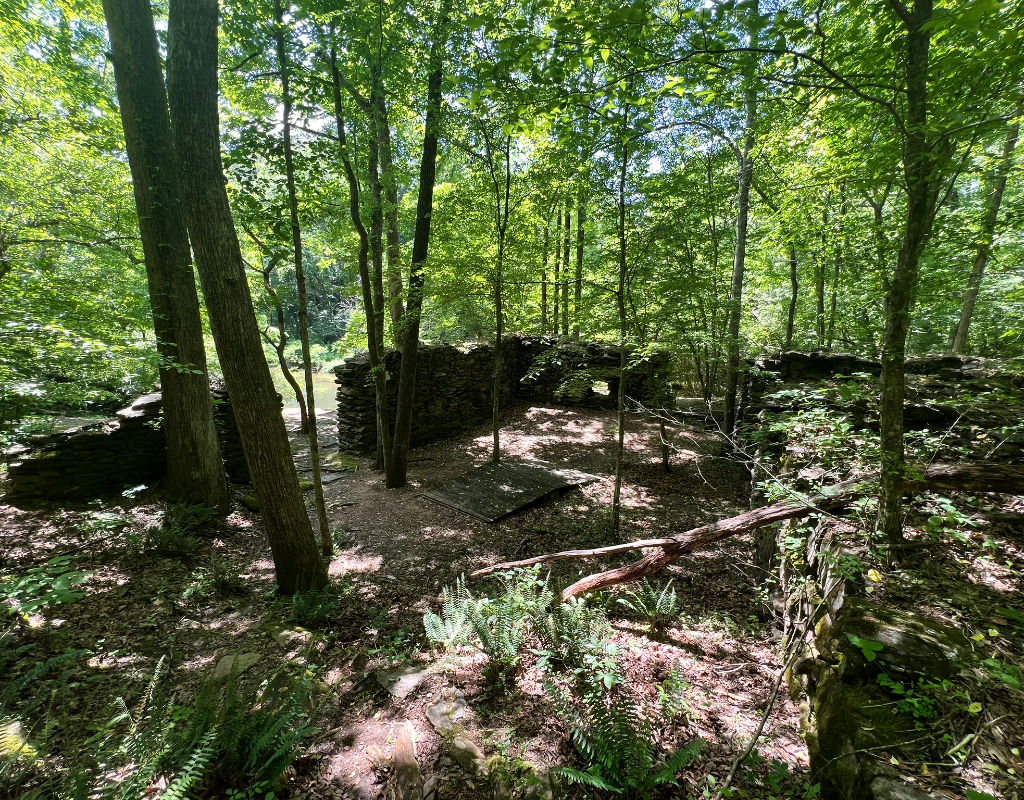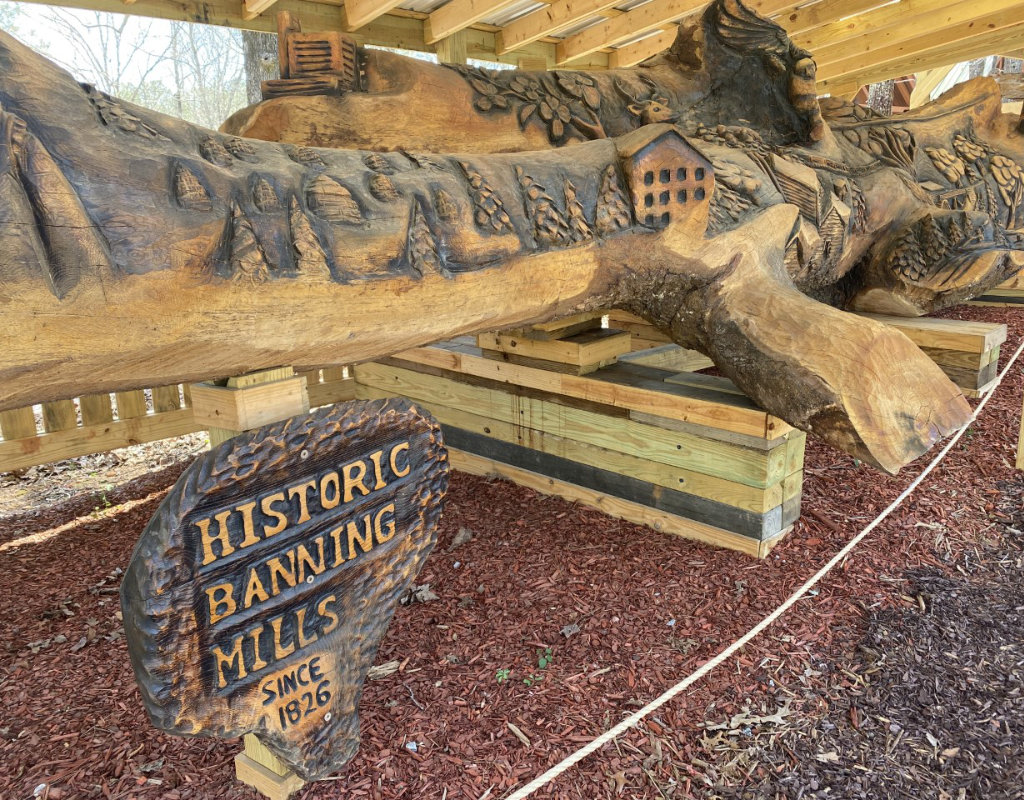History of Banning Mills
We're Official: Banning Mills Approved as a Registered Historic District!
We’re proud to announce that the Banning Mills Industrial Archaeological District has officially been approved as a registered historic district by the State of Georgia! This important designation recognizes the remarkable legacy of industry, innovation, and engineering that shaped this special place from the 1840s through the 1970s.
We will soon be listed on the Georgia State Parks and Historic Sites website, with hopes of being added to the National Register of Historic Places shortly thereafter. We’ll share the official listing link as soon as it goes live—stay tuned!
Nestled in the rugged beauty of Snake Creek Gorge in Carroll County, Georgia, the Banning Mills Snake Creek Industrial Archeological District is a unique historical treasure. Spanning over 516 acres, this district reflects the industrial evolution of the American South from the mid-19th century to the early 20th century. Discover the story of an area that transformed from dense wilderness into one of the South’s earliest industrial hubs, where innovation, resilience, and nature converged.
We invite all to visit us and explore the surrounding nature and history.
Here you will see a brief overview of our history, followed by a deeper dive into why our historic district is so unique!
Before Banning

Long before the roar of water-powered mills filled Snake Creek Gorge, these lands were home to the Muscogee (Creek) Nation, who lived, hunted, and farmed along the Chattahoochee River and its tributaries for centuries. A major Native trail once followed Snake Creek through the gorge—connecting villages and trade routes long before roads and railroads arrived. That trail later became the foundation for the original Carrollton–Newnan Road.
Just five miles away stood the home of Chief William McIntosh, a Creek leader whose life and legacy shaped the early 1800s in this region. His plantation, Lockchau Talofau (“Acorn Bluff”), is now preserved as McIntosh Reserve, a public park honoring both his story and the land’s deeper Indigenous roots. McIntosh Reserve is the end point of our Kayak Tours!
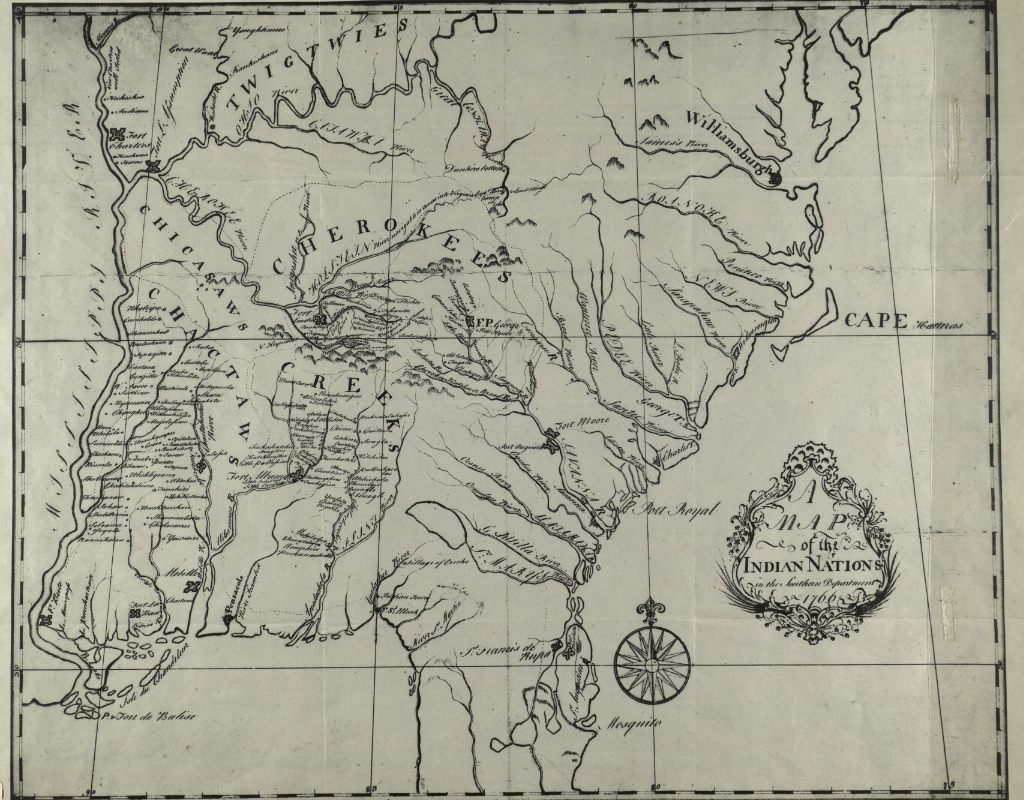
A Hidden Industrial Powerhouse
This rugged two-mile stretch of creek became home to a thriving industrial district with textile, paper, and wood pulp mills—all powered by the waters of Snake Creek. The surrounding ridges grew into a self-contained mill village with over 1,200 residents, its own post office, train depot, combination church-school, and was one of the first locations in Georgia to have electric lights.
Why Here?
The answer is geography. Snake Creek slices through the ancient Brevard Fault, dropping 120 feet in just two miles. That dramatic drop created incredible waterpower—ideal for running multiple mills. Builders quarried stone from the gorge walls and used timber from old-growth forests to construct dams, mills, and raceways that powered sawmills, textile mills, gristmills, pulp mills, and a paper mill. They even made the brick on site to build the cotton mill that still stands today—an enduring symbol of their ingenuity and determination.
A Legacy of Innovation
One of (if not the) first mill to produce paper from pine pulp
Before it was common, Banning’s paper mill pioneered turning pine trees into paper—decades before the rest of the region caught on.
Early adopter of electricity
In 1888, the Cotton Mill was among the first in Georgia to be lit by electricity, with some accounts suggesting the Banning company store had a dynamo powering a single bulb as early as 1880!
Complex engineering feats
Builders created mile-long raceways carved into cliffs, massive dams, and multi-story mills in a tight ravine—all without modern machinery. The rugged terrain made transportation of materials difficult, so they had to use what was already here to build.
Timeline of Key Events
1847 - First mill (Bowen Mill) built by John Bowen. The area became known as Bowenville.
1852 - Bowen Mill burns down and the land was purchased by William Amis
1861 - Amis Mill built by Horace King and began producing textiles for the Confederate Army
1866-67 - Construction of Cotton and Paper Mills
1883 - Major flood destroys all four dams. Town changes name from Bowenville to Banning
1888 - Cotton Mill installs electric lighting and Amis Mill is converted to a paper pulp mill
1895 - Paper Mill becomes largest producer in GA and nearby states
1896 - Paper Mill destroyed by fire and never rebuilt
1906 - Amis Mill becomes knitting mill (produces ribbed socks)
1923 - Rubber plant added near the cotton mill to make bicycle grips and auto accessories
1940s - Cotton mill transitions to new owners; produces rug yarn
1971 - Mill operations end; property auctioned off
1847
First Mill (Bowen Mill) built by John Bowen. The area became known as Bowenville.
1852
Bowen Mill burns down and the land was purchased by William Amis
1861
Amis Mill built by Horace King and began producing textiles for the Confederate Army
1866-67
Construction of the Cotton and Paper Mills
1883
Major flood destroys all four dams. Town changes name from Bowenville to Banning
1888
Cotton Mill installs electric lighting and Amis Mill is converted to a pulp mill
1895
Paper Mill becomes largest producer in GA and nearby states
1896
Paper Mill destroyed by fire and never rebuilt
1906
Amis Mill becomes a knitting mill producing ribbed socks
1923
Rubber plant added near the cotton mill to make bicycle grips and auto accessories
1940s
Cotton Mill transitions to new owners; produces rug yarn
1971
Mill operations end; property auctioned off
Expanded History of Banning Mills
Early Industry - Bowen and Amis Mills
On March 23, 1847, John Bowen purchased the land currently occupied by the cotton mill. By the end of 1849, with the addition of his brothers William, Thomas, and Christopher, they established the Bowen Manufacturing Company. The area was officially listed as Bowenville, named so because William Bowen was the postmaster.

The small textile mill first produced yarn, then later osnaburg — a durable cotton fabric essential for various practical uses, including wagon covers and working-class clothing. Notably, in December 1849, the Bowen Manufacturing Company earned acclaim at the Charleston Fair for its superior cotton yarns. Despite initial success, the mill burned down in 1852, and the property was sold in bankruptcy to William Amis.
Amis, a Confederate supporter, commissioned famed freedman and renowned bridge builder Horace King to construct a new mill upstream. King's reputation included building Moores Bridge over the Chattahoochee River, three miles south of Banning, demonstrated his skill and regional prominence Completed in 1861, the Amis Mill served both as a textile and grist mill.

The mill became a critical Confederate industry site, manufacturing yarn for the Confederate Commissary Department as a sub-contractor for the New Manchester Mill on Sweetwater Creek in Douglas County about fifteen miles east; A large brick factory that made uniforms for the Confederate Army.
Union soldiers arrived in the area in 1864 with orders to destroy any building producing materials for the Confederacy and to arrest its owners. Union troops burned the New Manchester Mill building and imprisoned its workers. Upon reaching the Amis Mill however, they found a mostly empty building, except for an area still operating as a grist mill. Amis had the textile machinery moved to Spartanburg, South Carolina, to conceal operations from General William Sherman’s troops, thus saving the mill from destruction.
After the war, the Amis Mill diversified, housing a cotton gin and leather tannery before transitioning into various operations—including flour, grist, saw, and shingle mills—until its conversion in 1888 into a wood pulp mill supplying the Paper Mill downstream.
Post War Expansion - Cotton and Paper Mills
After the war, Amis formed the Carroll Manufacturing Company and the Georgia Paper Manufacturing Company. In 1867, he built a three-story, 28,000-square-foot cotton mill on the site of the original Bowen Mill and simultaneously constructed a massive four-story paper mill further upstream.
Mills like these were integral to the rebuilding of the South’s economy during the post-war Reconstruction era. A majority of manufacturing sites had been destroyed across the former Confederate States. These two large mills significantly contributed to restoring economic stability in Western Georgia.
Cotton Mill - 1867 - 1971
Before the war, cotton cultivation was the backbone of commerce, with the raw product primarily shipped north or overseas for processing. After the war, the establishment of numerous new textile mills enabled the South to process its own raw materials, adding value to its products and fostering regional economic growth.
The cotton mill started operation with over 1,000 spindles and 150 operators. Bricks were made on-site, and the stone foundation was carved from nearby cliff walls. In 1881 Amis sold half of his company to Arthur Hutcheson who would become arguably the most impactful mill owner in Banning's history. By 1883, he, along with his investors, purchased the remaining interest and formed the Hutcheson Manufacturing Company. They modernized the mill with additional floors, new turbines, electric lighting (installed in 1888), and fire safety systems.
New Depot at Banning
In 1883, to streamline the transportation of goods to and from Banning, a new depot was constructed in the district situated along the Savannah, Griffin, and North Alabama Railroad. The land for the depot was donated by William Amis, while the Hutcheson Manufacturing Co. and Wilkinson Paper Mill provided the materials for the building.
Flood of 1883
A massive flood washed away all four dams and three bridges in Banning. This caused production at both mills to cease for two years while the dams and raceways were rebuilt. During this time, the Horseshoe Dam was constructed using a new U-shaped design.
Following the flood, the Hutcheson Manufacturing Company undertook significant improvements to the cotton mill. They began constructing a new 1,500-foot raceway from the Horseshoe Dam to the cotton mill to provide more power for upgraded machinery. They also added a fourth floor to the building, an adjacent stone picker house, an office, a boiler house, a dye house, and a 15,000-gallon concrete cistern/reservoir uphill from the mill as part of the fire sprinkler system.
The Hutcheson Manufacturing Company expanded it's production of sheetings and shirtings as well as yarns, warps, rope, and bags. Much of the product was sold in New York and Philadelphia. The weekly shipment of yarns was 45 bales – over 70,000 pounds of yarns and rope per month and the factory employed 125 to 150 operatives. The rope produced was of very good quality and was sold as a name-brand product.
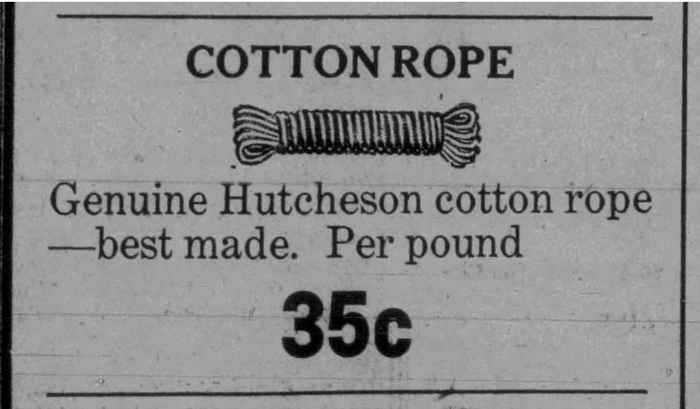
Electricity Comes to the Cotton Mill
In 1888, a small electric turbine was installed to power the electric lights, making the cotton mill one of the first locations in Georgia to have electric lighting. People traveled from all around to witness the spectacle. Although installation of lights at the Cotton Mill is documented in 1888, local lore suggests that Banning was home to the first electric lights in the state.
Paper Mill - 1867 - 1895
The Georgia Manufacturing and Paper Mill Company began constructing the paper mill and Horseshoe dam in late 1867. This building was the most labor-intensive of all the mills on Snake Creek. Thousands of rock blocks were blasted from the gorge wall, just 200 feet from the site, to build the foundation and raceway. You can see the impressive stone foundation, raceways, and dam ruins along the Creek View Trail. Part of the trail is actually along the historic raceway!
The paper mill began its production in the traditional manner of the time, utilizing rags, ropes, bagging, and old papers as the primary sources for pulp. By 1873 the paper mill was supplying local newspapers, such as the Newnan Herald. That next year the Georgia Paper Mill Company took the premium at the state fair in Macon, GA. Production continued to rise and by the end of 1875, the paper mill ranked second in the state, with a 24-hour capacity of 3,500 lbs. of print and wrapping paper.
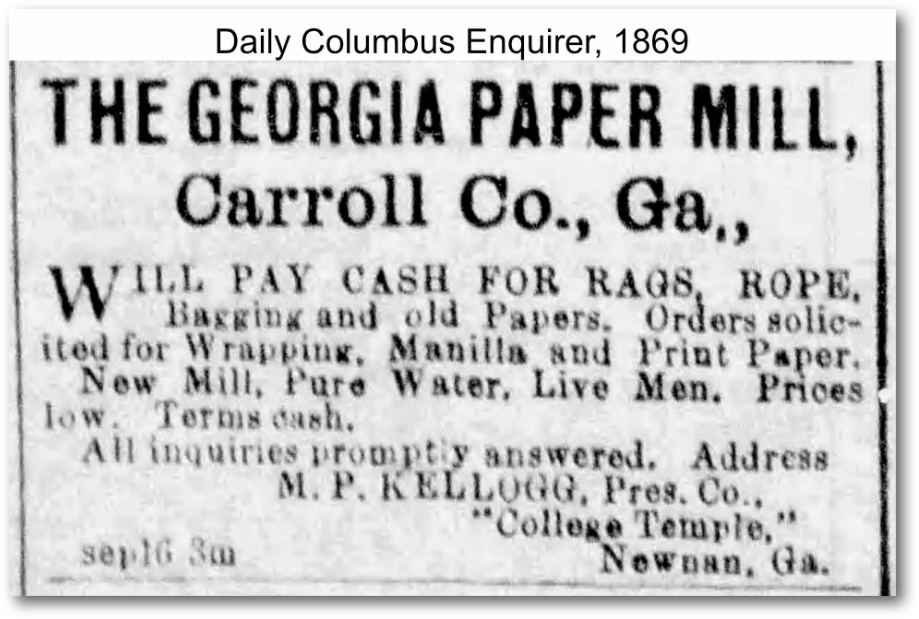
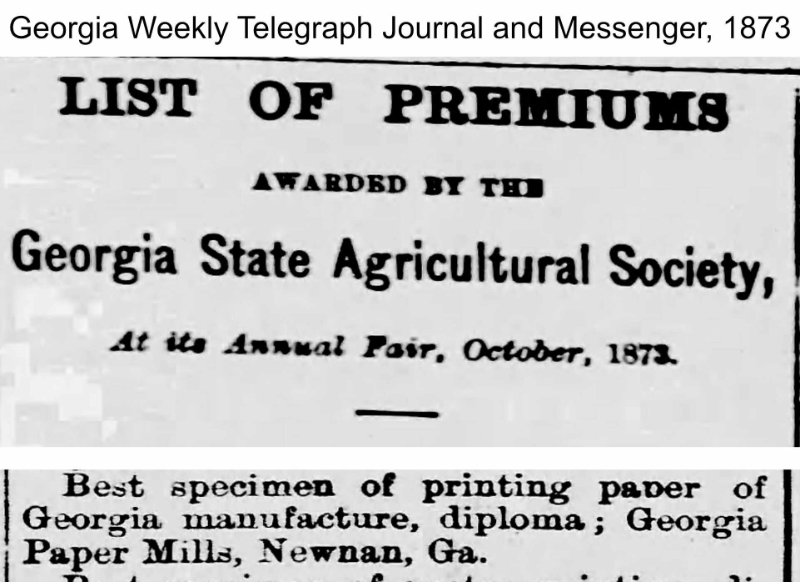
Innovation and Invention: Contribution to American Paper Manufacturing: Pine Wood Pulp to Paper
Banning played a pivotal role in developing paper manufacturing in the Southern United States, particularly through its early experimentation with pine wood pulp. While paper mills in the Northern United States and Canada focused primarily on spruce wood, Banning’s mill was among the first to explore the potential of using pine, which was previously considered unsuitable for papermaking due to its high resin content. This pioneering work was led by figures like Columbus A. Rose, Larkin A. Thomas, and Robert Thomas, who initiated key innovations that influenced the Southern paper industry for decades.
At its height in 1895, the paper mill was the largest paper producer in Georgia and the surrounding states of Alabama, Tennessee, Florida, South Carolina, North Carolina, Louisiana, and Mississippi. It was also one of only three mills in the United States to make stripped paper. The paper mill was run night and day, employing 240 operatives using water power for the machinery and an electric plant for lighting.
Arthur Hutcheson died in 1895 and business was conducted by directors of the Hutcheson Manufacturing Company. Only one month later, the train depot at Banning was destroyed by fire along with a large quantity of paper stored there, further complicating business operations.
In June of 1896, the paper mill was destroyed by fire, entailing a loss of about $40,000 with no insurance. The Hutcheson Manufacturing Company continued to operate the cotton mill, but the paper mill was never rebuilt.
Life in the Mill Village
The village of Banning grew up along the ridges above the mills. Workers lived in saltbox and saddlebag homes, often with their own gardens, outhouses, and livestock pens. The community had its own post office, doctor’s house, a combination church and school, and even a company baseball team—the “Banning Nine.” During times of hardship when the mills closed due to changes of ownership, fires, floods, and the Great Depression, families and workers supported each other utilizing the community gardens and livestock.
Life in the mill village at Banning was defined by strong community ties, company influence, and rural resilience. After Arthur Hutcheson acquired the property in 1878, the village expanded significantly. New housing, a combination school and church, and on-site medical care helped shape a self-contained community built around the mill’s operations.
Much of what we know about daily life in the Banning mill village comes not from ledgers or official documents, but from the people who lived it. In the early 2000s, historians interviewed dozens of former mill workers and their families—capturing their memories of work, childhood, hardship, and humor. These real-life stories offer a deeply human portrait of life on the mill village, told by those who remember it best.
The following dropdown sections explore the daily life, social structure, and unique culture of the Banning Mill village, based on oral histories, research, and community memory.
Today
Remnants of this remarkable industrial past can still be seen at Banning Mills: towering stone ruins, historic roads, the still-standing Cotton Mill, and building remains from the village era. The district is now recognized by the Georgia National Registry for its contributions to:
- Industry & Innovation
- Engineering & Architecture
- Archaeological Significance
Our nomination as a Historic District was approved in May 2025! We will soon be listed on the official Georgia State Parks and Historic Places Registry. Check back soon for the official listing!
Part of our mission is to preserve the unique and pristine ecosystems of the Snake Creek Gorge and the Chattahoochee Watershed, as well as researching, promoting, and safeguarding the immense historical value of the Snake Creek Gorge and the Banning Mills Township. We strive to increase community awareness of this special area through educational programs, publications, and conservation initiatives. Learn more about our mission and donate to help us preserve this hidden gem.
Look Into the Past
Explore multiple mill sites and ruins along our hiking trails. Visit our gift shop to get a book of our history and the surrounding areas. The unique geology and ecology of Snake Creek Gorge is unmatched! You can even walk along the historic raceways that brought water to and powered the mills.
Legacy Tree Carvings
There is an enormous amount of history and unique natural features to explore at Historic Banning Mills. When some of our oldest and most beloved trees fell over the years due to old age and storms, we decided that instead of letting them rot in the woods, we would let them continue to tell of the history and nature they witnessed over hundreds of years in the form of Legacy Tree Carvings.
Trail Map
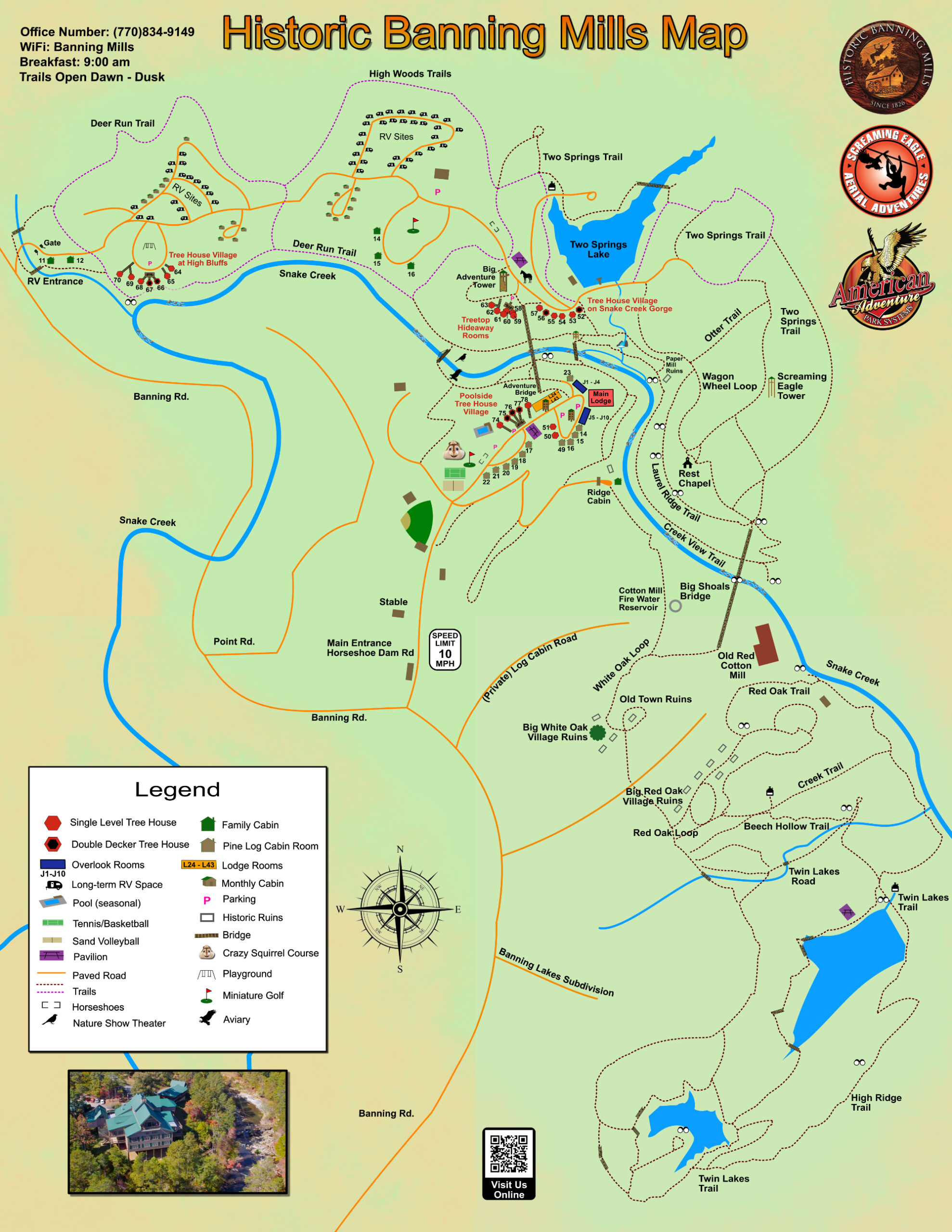
Thank you for reading about the rich history of Banning Mills! As stated previously, we will link to our official listing on the Georgia State Parks & Historic Site as soon as it is posted.
If referencing this page in academic or historical research, please cite as follows:
Chicago Style
Historic Banning Mills. “History of Banning Mills.” Last updated August 13, 2025. https://historicbanningmills.com/history-of-banning-mills/
APA Style
Historic Banning Mills. (2025, August 13). History of Banning Mills. https://historicbanningmills.com/history-of-banning-mills/
MLA Style
Historic Banning Mills. “History of Banning Mills.” Historic Banning Mills, 13 Aug. 2025, https://historicbanningmills.com/history-of-banning-mills/.

